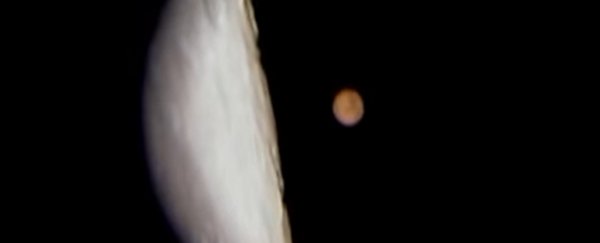September offers a number of fascinating lunar occultation events worldwide.
Chances are, there's one near you this month. The Moon is certainly busy in September, as its passage covers up (occults) multiple celestial objects worldwide.
If skies are clear, you may just get a chance to see one of these events listed below, as the Moon blocks out a star, planet or star cluster.
You may well have seen images from last month's lunar occultation of Saturn from observers across the United Kingdom and western Europe. The Moon occults Saturn 10 times in 2024 – once for every lunation pass.
The slowest moving of the naked eye planets, Saturn makes a good repeated target for the Moon. The rings are headed towards edge-on in 2025, making for an appealing view as it peeks out from behind the lunar limb.
Why Occultations
Occultations occur in cycles, as the Moon journeys on its monthly trek five degrees above and below the ecliptic plane. In the current epoch, the Moon can occult four +1st magnitude stars: Aldebaran, Regulus, and (as is ongoing in 2024) Antares and Spica.
The Moon moves its own diameter (30′ or half a degree) once every hour, and the dark limb leads the way when it's waxing, and trails when it's waning. Dark limb ingresses can be especially dramatic.
The Moon is also riding high in the sky in 2024, as we head towards a bi-decadal Major Lunar Standstill next year in 2025.
An Occultation, Transit… or Eclipse?
Like eclipses, successive occultations in a cycle move westward by about 120 degrees of longitude.
Lots of observational astronomy is no more than watching one thing pass in front of another, and seeing what happens: occultations, transits and eclipses are similar ways to express the what is essentially the same thing.
Double star companions, profiles of asteroids, and diameters of tiny stellar sources have revealed themselves during occultations.
Occultations in September
All exciting stuff, to be sure. Here's our rundown on what's in store for lunar occultations in September worldwide:
First up, the 5% illuminated waxing crescent Moon occults Venus on September 5th, centered on 10:16 Universal Time (UT). Perhaps, only a few penguins and a few windswept remote research stations in Antarctica will witness to this daytime event. The rest of us will be treated to a very close pairing of the two at dusk.

Next, the 10% illuminated, waxing crescent occults the +1st magnitude star Spica (Alpha Virginis) for central Africa on the evening of September 6th centered on 17:04 UT. Fun fact: located 250 light-years distant, Spica is a close candidate (along with Betelgeuse) for a nearby galactic supernova.

Four days later on September 10th, the 43% illuminated, waxing crescent Moon occults the +1st magnitude star Antares (Alpha Scorpii) for western Australia centered on 13:09 UT. We caught a similar event back in 2009.
Seeking Saturn
Just past mid-month on September 17th, the 99.2% illuminated, waxing gibbous Moon occults Saturn for western North America, centered on 10:22 UT in the early morning hours.
Northeastern Australia and the nearby Pacific island region sees the event transpire in the evening. This is just nine days after Saturn will reach opposition for 2024 on the 8th. The occultation occurs 16 hours prior to Full Moon and the partial lunar eclipse on the 17th-18th.
This eclipse favors the Americas, Africa and Europe. Saturn spans 19″ during the event, and will take about 40 seconds to disappear and reappear from behind the Moon.

Just five hours after the eclipse on the 18th, the Moon occults Neptune, also for North America. A tough catch, as faint +8th magnitude Neptune only spans 2.4″, but a challenge none the less. Neptune reaches opposition just 3 days later for 2024 on September 21st.
Finally, the 75% illuminated, waning gibbous Moon occults the well-known open star cluster Messier 45 (also known as the Seven Sisters or the Pleiades) for North America on September 22nd. The Moon visits the cluster once every lunation for the remainder of this current decade.
The International Occultation Timing Association (IOTA) maintains pages for stellar and planetary lunar occultations in 2024. These include ingress/egress times for select sites.
Observing Occultations
Observing an occultation of a bright star or planet by the Moon is as easy as watching at the appointed time. Binoculars or a small telescope will certainly improve the view. Imaging or recording can, however, be a tricky affair – especially if the dazzling Moon is near Full.
"Here in London we were lucky enough to catch an occultation of Mars by the Moon a few years ago, so I was excited to see that there would be a reasonably favorable occultation of Saturn visible towards the end of August this year," astrophotographer Roger Hutchinson told Universe Today.
"Imaging events like this where the main subjects have such a huge difference in brightness requires the capture of multiple shots at different exposures, these then being composited to record the event more or less as the eye sees it.
"Transits, occultations and eclipses bring home the constant motion of our solar system and are always amazing events to witness and capture. Can't wait 'til the next one!"

Don't miss one of these spectacular celestial events, coming to a sky near you.
This article was originally published by Universe Today. Read the original article.
